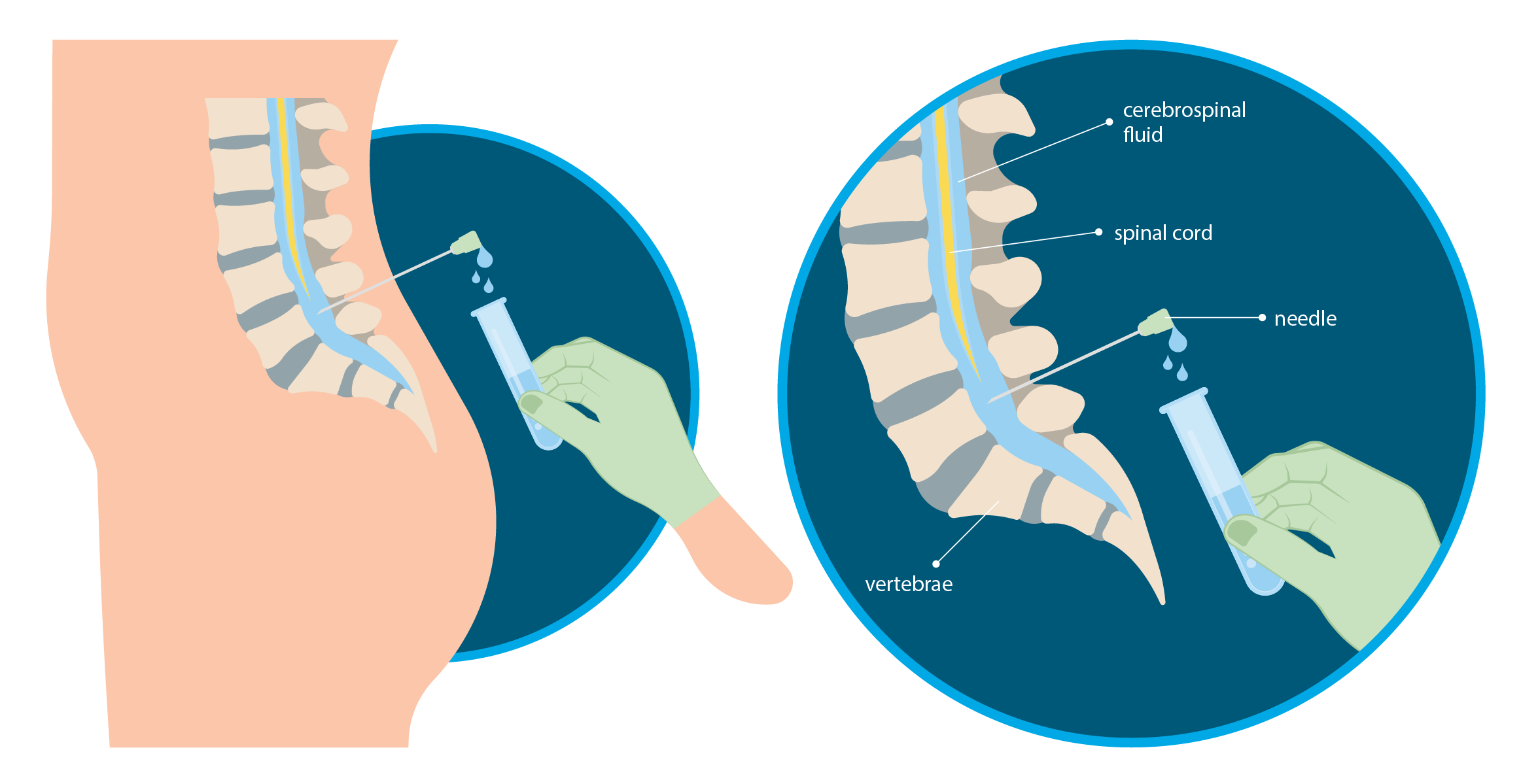
What is cerebrospinal fluid (CSF) and why is it crucial for research?
The cerebrospinal fluid (CSF) is a clear, water-like liquid that maintains the appropriate environment for the cells of the central nervous system. For example, it supplies nutrients to neuronal and glial cells, functions as a lymphatic system for the central nervous system by removing the waste products of cellular metabolism, and transports neurotransmitters.
The CSF is like a window into the brain as it gives information that is impossible to obtain through blood due to the so-called blood-brain barrier. As CSF is the only body fluid that is in direct contact with the brain (unlike blood or urine) and has the potential to contain additional information about the development of brain diseases, each sample of CSF is very precious for our research. It allows us to look for potential biomarkers that could be used to diagnose brain diseases, such as Parkinson’s disease, and could also help monitor neuroprotective therapies (methods to prevent neuronal cell death) in the future.

Does CSF already have a role beyond research in routine clinical diagnostics?
Indeed, specific proteins are differentially regulated in the CSF in neurodegenerative diseases. For example, for Alzheimer's disease, it is possible to see changes for two specific proteins (tau or amyloid-beta) five to ten years before clinical symptoms of dementia appear and before we can see cell loss by using brain imaging. By analysing the CSF, it is thereby possible to confirm the diagnosis of Alzheimer’s and to monitor the proteins that are accumulating in the brain. In this way, a reliable and evidence-based decision can be made in terms of screening and treatment of the disease.
As Parkinson's disease causes changes in the brain similar to those caused by Alzheimer's, analysing the CSF could also help to detect Parkinson's disease early. Many scientists, including the Luxembourg Parkinson's Disease Study team, are therefore working on a similar test to analyse the concentration of alpha-synuclein, a protein that accumulates in the brains of Parkinson's patients. In the future, this protein could be used as a biomarker for Parkinson's disease in cerebrospinal fluid.
What is the procedure for CSF extraction?
The participant is seated on the examination bed, leaning forward with arms crossed in a comfortable position. The doctor then locates the spot for the puncture, which is in the area between the lower lumbar vertebrae. Next, the skin is thoroughly disinfected before inserting the needle. It is important to note that the needle cannot reach the spinal cord, as the entry site is far from it. Before starting, the clinical team explains the procedure and will answer any question participants may have.
As soon as the hollow needle is inserted into the CSF area, the liquid slowly drips out and the neurologist can collect enough CSF drop by drop. The whole procedure lasts a total of 10-15 minutes. A potential side effect can be a headache, which improves after laying down and resting, and responds to classical pain killers. All participants will be informed about all potential risks and side effects in detail beforehand. After the procedure, make sure to refrain from strenuous physical activities for 24 hours.

Who can donate CSF?
All participants who are part of the Luxembourg Parkinson’s Study can donate CFS. If you are not already part of the study, you can still join and then have the opportunity to donate different samples. We are currently recruiting control subjects and recently diagnosed patients.
To support our research on Parkinson’s disease in Luxembourg, CSF samples from both patients and healthy controls are extremely important to compare people who are affected by the disease and people who are not.
The CSF collection is one of the ways you can optionally donate samples for our research programme. If you are interested in supporting the Luxembourg Parkinson’s Study by donating CSF, please contact the Parkinson's Research Clinic.
What happens to a sample after it has been collected?
After collecting your precious donation, the sample is transferred to the Integrated BioBank of Luxembourg for optimal processing and storage, to keep it accessible for research for many years. Researchers from Luxembourg, together with international research partners, analyse the content of the CSF, looking for differences between patients’ and control’ samples, to find new ways to diagnose Parkinson’s disease.




